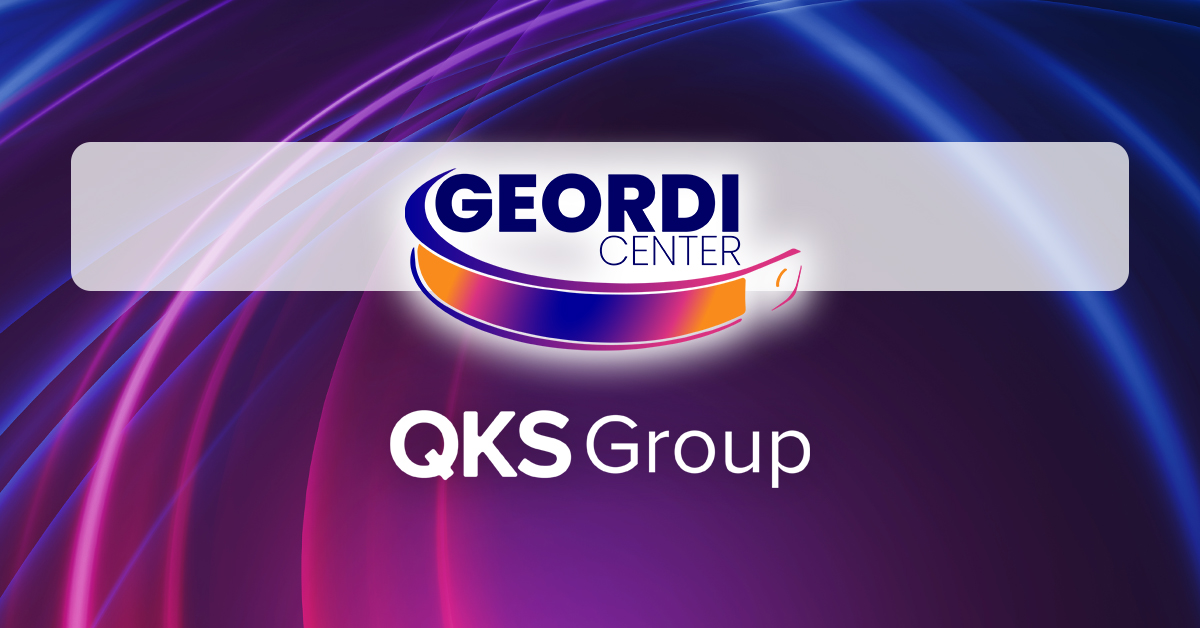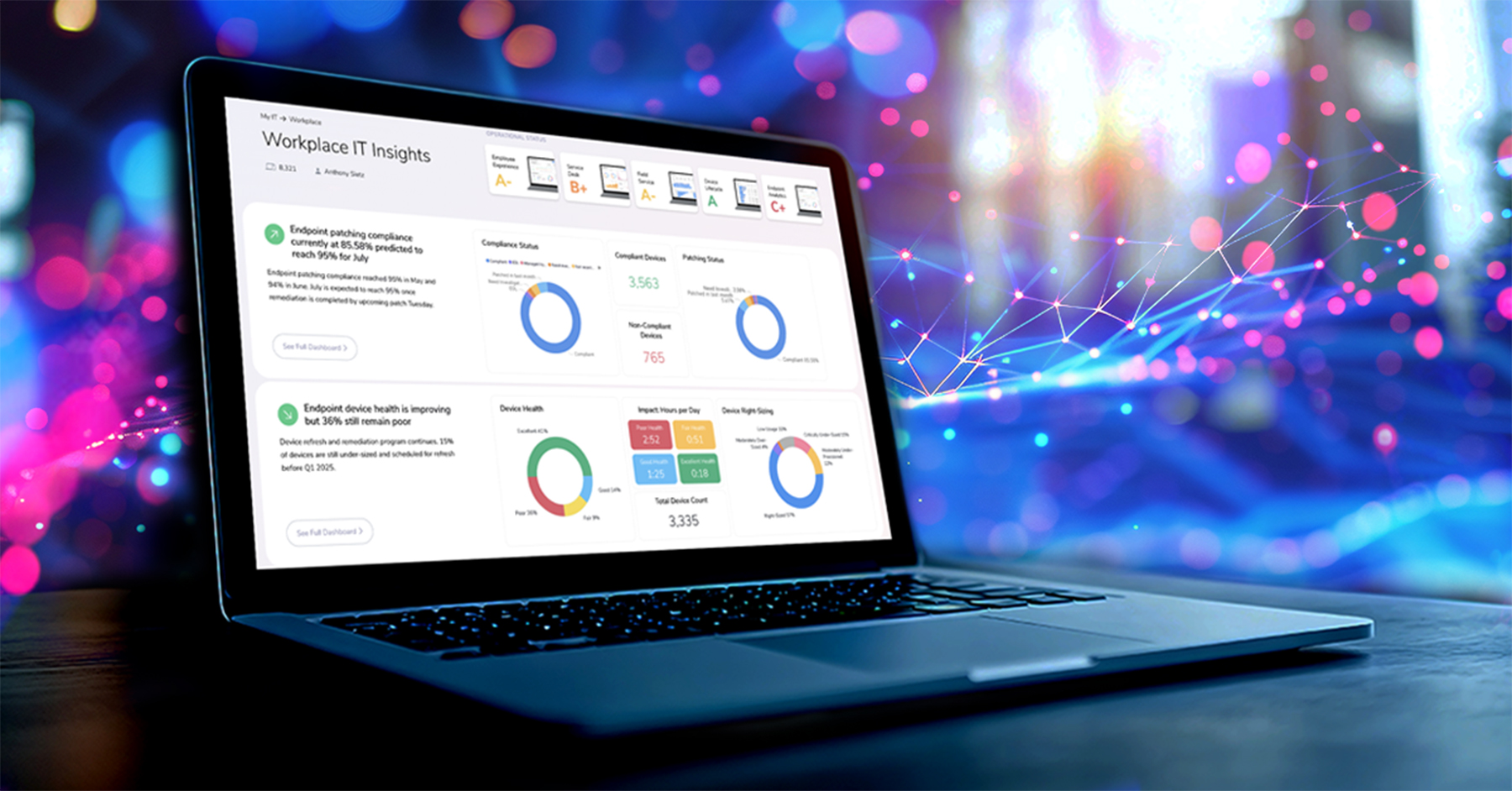- Endpoint Management
- DEX

Case Study: Smarter Device Allocation through Compucom’s Full Lifecycle Observability (FLO)

Emma Mak • Staff Writer
Employee productivity plays a pivotal role in a company’s success. For CIOs and IT Directors, ensuring employees have the right tools and technology is essential. But what if the very devices meant to enhance productivity become a source of inefficiency?
Understanding One Customer’s Productivity Decline
Our customer, a leading water and wastewater management company, recently faced a troubling dilemma: declining productivity. Employees struggled with underperforming devices, and the company had to replace devices frequently, leading to increased costs and disruptions.
The overall employee experience was suffering. Adding to the challenge, the IT department was overwhelmed with managing replacements and refurbishments. They needed a solution — fast.
The Solution: Leveraging Telemetry for Insights
With our expertise in device management and telemetry, we stepped in to identify the root causes of the productivity slump. Telemetry allowed us to gather data on device usage, revealing surprising insights.
We discovered that around 4% of users had second devices, typically not returned after they received replacements. These extra devices were a waste of resources — and contributed to the inefficiency within the organization. By retrieving and reallocating or disposing of these unused devices, inventory could be streamlined, and unnecessary expenses reduced.
But the benefits of telemetry went further. With more accurate data on device usage, we helped our customer identify employees who were under-utilizing their devices. This improved visibility allowed resources to be allocated more efficiently.
Devices were now accurately accounted for, improving chargebacks and cost savings. This newfound accuracy in device management was a game-changer for the company, paving the way for more informed decision-making and resource allocation.
Implementing Performance-Based Refresh Methodology
With our experts’ advice and these insights, they began implementing a performance-based refresh methodology. This shifted them from a one-size-fits-all replacement approach to a more strategic, tailored solution.
Desktops in poor health or under-performing for their users were identified and replaced with more appropriate devices. This improved employee productivity and ensured that devices were used to their full potential.
Still-viable replaced devices were refurbished and redeployed, maximizing their lifespan and reducing overall costs. By considering each employee’s persona and role, the company could make informed decisions about who needed a device refresh, effectively balancing cost and benefit.
Achieving Significant Cost Savings
The results of these initiatives were impressive. By optimizing catalogs for engineering desktops, the company saved approximately $1000 per device, translating to $200k in annual savings.
In addition, the improved refresh methodology led to an estimated $300k in deferment cost savings. These financial gains were a testament to the power of intelligent device management and the impact of data-driven decision-making.
Enhancing Employee Experience
Beyond the financial benefits, the company saw a marked improvement in employee experience. With devices that met their needs and performed reliably, employees could focus on their work without the interruption and frustration of technical issues. This provided a much-needed boost in morale and efficiency and underscored the importance of investing in the right tools for the job.
Practical Steps for CIOs and IT Directors
For CIOs and IT Directors, this case is a compelling example of the importance of effective device management. By leveraging telemetry and data-driven insights, organizations can optimize their resources, improve productivity, and achieve significant cost savings. If you’re looking to replicate this success in your organization, here are some practical steps to consider:
- Invest in Telemetry Tools: Applying advanced telemetry tools provides valuable insights into device usage and performance — a must for informed decision-making about device replacements and upgrades.
- Implement a Performance-Based Refresh Strategy: Shift from a one-size-fits-all replacement approach to a performance-based refresh strategy. Replace devices only when necessary, maximizing their lifespan and reducing costs.
- Monitor and Manage Device Inventory: Regularly monitor and manage your device inventory to identify unused or underutilized devices. Reallocating or disposing of these devices streamlines your operations and reduces waste.
- Consider Employee Personas and Roles: When making decisions about device replacements, consider your employees’ specific needs and roles to maximize productivity and job satisfaction.
- Foster a Culture of Continuous Improvement: Review and assess your device management strategies regularly to identify areas for enhancement and optimization.
Use Compucom and Full Lifecycle Observability for Smarter Device Management
Compucom’s Full Lifecycle Observability (FLO) framework underpins all our services and includes a technology stack that provides AI-generated insights and recommendations visualized in a dashboard. This provides real-time visibility to all IT and business leaders through a variety of metrics that matter most to their business.
Smart device management can have a significant impact. FLO leverages telemetry to help implement performance-based refresh strategies, and optimize device management, helping your organization achieve substantial cost savings and enhance employee experience.
Ready to take your device management to the next level? Explore the possibilities with Compucom’s FLO and see the difference they can make. Take action today for a more productive and efficient workplace.
RecenT

Future-Ready IT: Strategies to Optimize, Adapt, and Lead Through Uncertainty

Reimagining IT with the FLO Framework: Inside Compucom’s Geordi Center for Interactive Managed Services and Digital Workplace Solutions

Opportunity in Uncertainty: Optimize Your Remote, Hybrid, or In-Office Setup

9 Ways Strategic IT Staffing Empowers Organizations

Case Studies: Asset Intelligence and Endpoint Compliance Made Easy

AI and the Enterprise: The Future of IT Management
TOPICS
Increase Workforce Productivity with Data-Driven Device Allocation
- Endpoint Management
- DEX
Case Study: Smarter Device Allocation through Compucom’s Full Lifecycle Observability (FLO)

Emma Mak • Staff Writer
Employee productivity plays a pivotal role in a company’s success. For CIOs and IT Directors, ensuring employees have the right tools and technology is essential. But what if the very devices meant to enhance productivity become a source of inefficiency?
Understanding One Customer’s Productivity Decline
Our customer, a leading water and wastewater management company, recently faced a troubling dilemma: declining productivity. Employees struggled with underperforming devices, and the company had to replace devices frequently, leading to increased costs and disruptions.
The overall employee experience was suffering. Adding to the challenge, the IT department was overwhelmed with managing replacements and refurbishments. They needed a solution — fast.
The Solution: Leveraging Telemetry for Insights
With our expertise in device management and telemetry, we stepped in to identify the root causes of the productivity slump. Telemetry allowed us to gather data on device usage, revealing surprising insights.
We discovered that around 4% of users had second devices, typically not returned after they received replacements. These extra devices were a waste of resources — and contributed to the inefficiency within the organization. By retrieving and reallocating or disposing of these unused devices, inventory could be streamlined, and unnecessary expenses reduced.
But the benefits of telemetry went further. With more accurate data on device usage, we helped our customer identify employees who were under-utilizing their devices. This improved visibility allowed resources to be allocated more efficiently.
Devices were now accurately accounted for, improving chargebacks and cost savings. This newfound accuracy in device management was a game-changer for the company, paving the way for more informed decision-making and resource allocation.
Implementing Performance-Based Refresh Methodology
With our experts’ advice and these insights, they began implementing a performance-based refresh methodology. This shifted them from a one-size-fits-all replacement approach to a more strategic, tailored solution.
Desktops in poor health or under-performing for their users were identified and replaced with more appropriate devices. This improved employee productivity and ensured that devices were used to their full potential.
Still-viable replaced devices were refurbished and redeployed, maximizing their lifespan and reducing overall costs. By considering each employee’s persona and role, the company could make informed decisions about who needed a device refresh, effectively balancing cost and benefit.
Achieving Significant Cost Savings
The results of these initiatives were impressive. By optimizing catalogs for engineering desktops, the company saved approximately $1000 per device, translating to $200k in annual savings.
In addition, the improved refresh methodology led to an estimated $300k in deferment cost savings. These financial gains were a testament to the power of intelligent device management and the impact of data-driven decision-making.
Enhancing Employee Experience
Beyond the financial benefits, the company saw a marked improvement in employee experience. With devices that met their needs and performed reliably, employees could focus on their work without the interruption and frustration of technical issues. This provided a much-needed boost in morale and efficiency and underscored the importance of investing in the right tools for the job.
Practical Steps for CIOs and IT Directors
For CIOs and IT Directors, this case is a compelling example of the importance of effective device management. By leveraging telemetry and data-driven insights, organizations can optimize their resources, improve productivity, and achieve significant cost savings. If you’re looking to replicate this success in your organization, here are some practical steps to consider:
- Invest in Telemetry Tools: Applying advanced telemetry tools provides valuable insights into device usage and performance — a must for informed decision-making about device replacements and upgrades.
- Implement a Performance-Based Refresh Strategy: Shift from a one-size-fits-all replacement approach to a performance-based refresh strategy. Replace devices only when necessary, maximizing their lifespan and reducing costs.
- Monitor and Manage Device Inventory: Regularly monitor and manage your device inventory to identify unused or underutilized devices. Reallocating or disposing of these devices streamlines your operations and reduces waste.
- Consider Employee Personas and Roles: When making decisions about device replacements, consider your employees’ specific needs and roles to maximize productivity and job satisfaction.
- Foster a Culture of Continuous Improvement: Review and assess your device management strategies regularly to identify areas for enhancement and optimization.
Use Compucom and Full Lifecycle Observability for Smarter Device Management
Compucom’s Full Lifecycle Observability (FLO) framework underpins all our services and includes a technology stack that provides AI-generated insights and recommendations visualized in a dashboard. This provides real-time visibility to all IT and business leaders through a variety of metrics that matter most to their business.
Smart device management can have a significant impact. FLO leverages telemetry to help implement performance-based refresh strategies, and optimize device management, helping your organization achieve substantial cost savings and enhance employee experience.
Ready to take your device management to the next level? Explore the possibilities with Compucom’s FLO and see the difference they can make. Take action today for a more productive and efficient workplace.
Recent Blogs

Future-Ready IT: Strategies to Optimize, Adapt, and Lead Through Uncertainty

Reimagining IT with the FLO Framework: Inside Compucom’s Geordi Center for Interactive Managed Services and Digital Workplace Solutions

Opportunity in Uncertainty: Optimize Your Remote, Hybrid, or In-Office Setup

9 Ways Strategic IT Staffing Empowers Organizations

Case Studies: Asset Intelligence and Endpoint Compliance Made Easy




